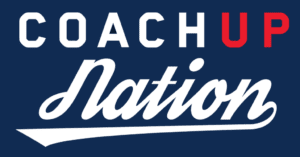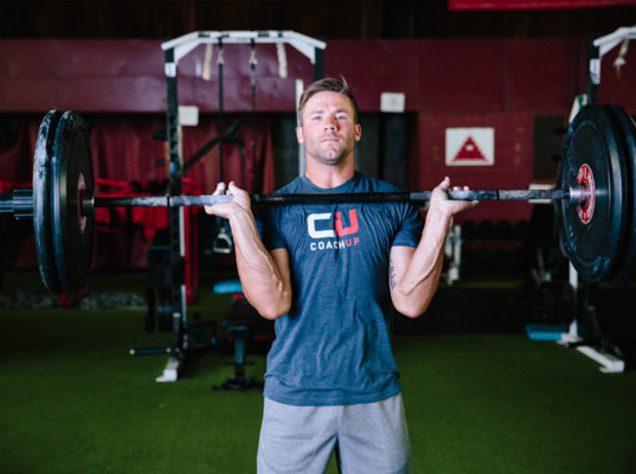An Overview Of Muscular Imbalances
As with any activity or sport, athletes must realize that specific training requires certain necessary ranges of motion. By recognizing that each movement within the muscles effects groups of muscles, joints, and abilities in symphony, athletes will immediately see how important it is to focus on engaging more than one muscle at any one time during your strength training. In fact, many people run into problems by over-focusing on one group, leaving the rest in the dust. When one set of muscles is majorly outworking another, it causes strain on the lesser group. This strain puts pressure on the weaker muscles to constantly work at the level of the stronger group, which will, invariably, result in injury and pain.
Of course, muscular imbalances can be fixed by appropriately spreading your efforts around, so make sure you give all the groups attention! Muscular imbalances can create the following symptoms:
Poor Body Position When you’ve got poor body position, athletes do not allow the antagonist muscles to complement the range of motion. For example, if the quads are overly tight, the hamstrings will not become fully engaged which limits the body’s ability to properly get into a ready position. On top of that, it forces the body to compensate which can place excess force and lead to injury.
Late Fatigue Next, if the competitor is overly tight, the antagonist muscle cannot bring the muscle back to its proper position. This increases resistance and, ultimately, fatigue within the muscle because it’s working harder to produce the same movement. To put it in perspective, this is similar to trying to move arm in comparison to moving your arm while holding a small weight — which is easier?
Increased risk of injury To take these images to the next level, try imagining it this way. A tight muscle is similar to a rubber band that has been pulled very tightly. Of course, this tension in the middle becomes high and susceptible to tearing if asked to extend beyond its capable range of motion. We all know what can happen to a rubber band that is pulled too far — snap! Over time, even the smallest of micro-tears can lead to eventual muscle strains or tears. One simple way you can help to erase this type of risk is by effectively warming up and cooling down each and every time. Going back to the rubber band for a moment, you can’t grab one and stretch it out before loosening it up a little, right? Just like the band, you must treat your muscles the same way — warm them up before demanding that they take high stress and pressure!
DIRECT BENEFITS OF STRENGTH TRAINING
However, have no fear, strength training is here! If you’re having trouble with injuries or muscular imbalances, strength training is something wonderful to consider. It will increase the amount of force your muscles can exert on a particular object at any given time, even if it’s late in the game. As an athlete, strength is a key component for finishing a game as strong as you started.
Additionally, strength training will permit your muscles to reach a maximum output of force in a shorter period of time. This helps shortens your reaction time and is beneficial when working at high speeds — when you’re strong, agile, and balanced, your muscles can quickly change direction and accelerate whether it’s the first minute or the ninetieth. The duration of time your muscles can sustain the level of force before exhaustion is extended as well.
INDIRECT BENEFITS OF STRENGTH TRAINING
Strength training will build up your tendons and ligaments as well, which will ultimately increase the size and overall ability of both. Adding this type of ability will give you some much needed stability of the joints that they surround. Next, you’ve got an increased bone density that comes as a byproduct of tensile force being placed on the bones. Without this tensile force, the bones will actually become brittle and susceptible to breaking. And, finally, you’ll enhance your joint range of motion. This way, your body will able to handle whatever the game throws at you during any period of time. That type of flexibility is under-appreciated, under-utilized, and criminally underrated!
FUNCTIONAL INTEGRATION
As an athlete, you might understand that your core muscles — your stomach, abdominals, lower back, and butt — are the foundation for the majority of our movements. Whether your realize it or not, nearly every movement originates, directly or indirectly, from your core muscles. As you move around, your core strives to maintain balance and provide a foundation for the other muscles to interact with. This ultimately helps with your correct biomechanics and optimum strength + endurance. To ensure that you’re forcing your sport-specific muscle groups to engage in a more functional way, you’ll have to incorporate a training program that does this as well.
If you’re looking for a short, but sweet example, try simply standing on one leg, closing your eyes, and facing your head forward. As your core strives to maintain balance, you should feel this functional integration of the muscles, starting at the foot and coming all the way up into your gluts, core, and lower back. Notice how the leg supports the ankle, which is supported by calves, thighs, and then supported by your core, and so on and so forth. This is an easy way to see, even if you don’t realize it, how your body constantly works in tandem on everything. Thus, if one area is weak, they all suffer. *
(Related: Read about how jumping rope can make you fitter and healthier here.)
Huddle Up In conclusion, it’s undeniably important to take care of all facets of your game and body. You can’t excel and dominate without a body that works well in symphony. When your muscles, ligaments, and joints are all on the same page, then they’ll support each other in the all-important ebb and flow of a game. This will take stress, pressure, and strain off of your body and allow yourself to fluidly move from one motion to the next.
So, if you think you might have a muscular imbalance, or want to create a personal and unique program that’s tailored to your game and abilities, consider booking one of CoachUp’s private trainers to help you out along the way. Our talented team will work with you to create a plan, build foundations, and reach goals on your way towards becoming a more complete athlete. What are you waiting for?
How useful was this post?
Click on a star to rate it!
Average rating 0 / 5. Vote count: 0
No votes so far! Be the first to rate this post.




